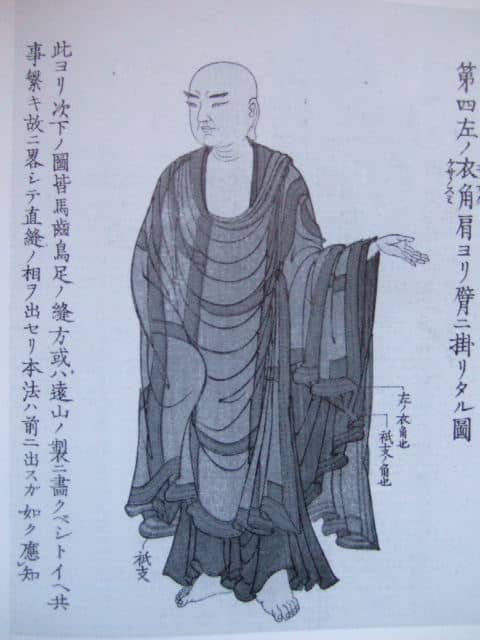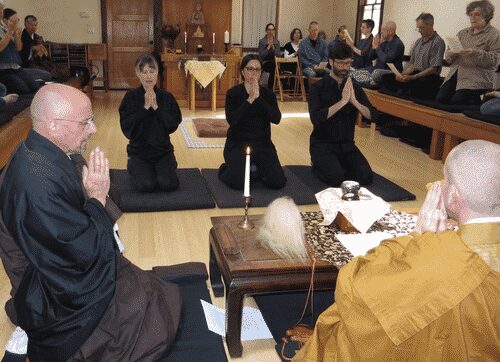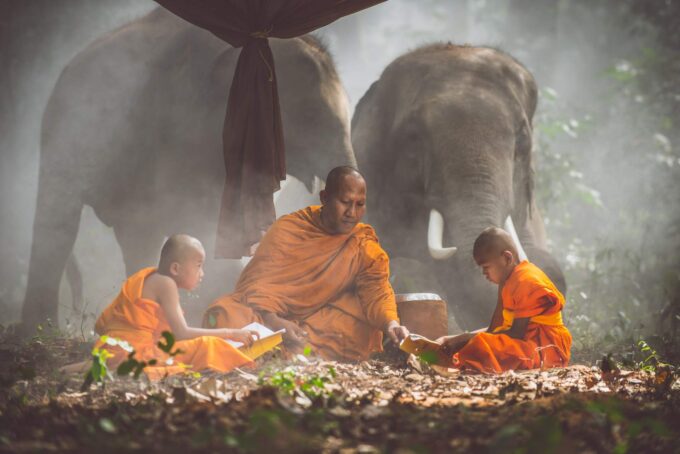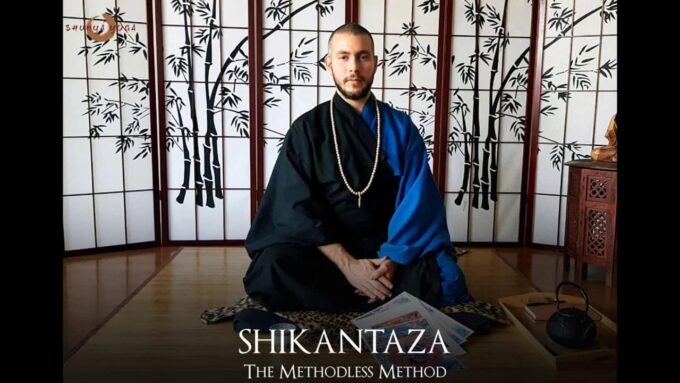The kesa is the symbol of the substance of the Buddha’s Law, the garment of “drizzle and dew, mist and clouds.” Heaven and earth, the entire universe, are one single kesa. No world exists outside of the kesa. We do not fall into hell or rise up to heaven – we go nowhere, we come from nowhere. There is only one kesa. We owe it to ourselves to wear the kesa.
Dōgen (1200-1253), the founder of the Sōtō sect of Zen Buddhism in Japan, wrote a treatise on the kesa in which he emphasized its crucial role in the practice of Buddhism. In his Kesa kudoku (The Merit of the kaśāya), Dōgen wrote that the garment ‘is the very essence of those who have realized enlightenment. Imbued with the spiritual power of a great master, the kaśāya was an important emblem of the transmission of authority from master to chosen disciple.” The kesa gives both legitimacy and power to the possessor whether it was an individual or a temple.
The chapter „The rules of conduct for the monastic community” gives us detailed instructions for constructing, handling, and even washing a kaśāya…Also, it is written that: “My disciple! Unfold a kaśāya as if it were a stūpa (funerary or relic mound), for it gives good fortune, extinguishes crimes and saves both human and celestial beings…. If a dragon wears even a single thread of one, he will be saved from being devoured by a garuda. If one wears a kaśāya in crossing the sea, there is no reason to fear dragon-fish or demons.”
The traces of its origin go back more than 2,000 years to ancient India where it was worn much like a sari is worn today. As explicated by Dōgen, the ideal kaśāya was known as a pāmasūla (funzō-e in Japanese), which means, literally, ‘excreta-sweeping robe.’ It was to be constructed of ‘discarded cloth’ of ten types: (1) cloth munched by oxen, (2) cloth gnawed by mice, (3) cloth burned by fire, (4) cloth soiled by menstrual blood, (5) cloth soiled by childbirth, (6) cloth discarded at shrines, (7) cloth discarded in a cemetery, (8) cloth presented as an offering, (9) cloth discarded by government officials, and (10) cloth used to cover the dead.
Monks were instructed to gather these scraps of soiled cloth with their left hands (the hand reserved in traditional Indian society for impure tasks), tear off any irrevocably stained portions, wash the rest, and construct a kaśāya from these segments. Buddhist scriptures stress that these bits of cloth are the purest that can be used.
The making of kesa is still considered a religious act. Such garment serve as a reminder of the teachings of Buddha, and some, which can pass from a master to a disciple, contain relics and presumably the wisdom and understanding of a deceased master. A standard part of the monastic costume, kesas are commonly subdivided into horizontal and vertical bands as an illusion to the rags and other pieces of discarded clothing used by the Buddha and other early practitioners. Kesas with five such bands are used daily, while more elaborate pieces, which can be divided into up to twenty-five bands, are used by high-ranking monks during formal events.
„All of the sûtras (…), the entire universe and nature in all its diversity, mountains, oceans, trees and flowers, even rocks, experience the merits of the kesa (…) But to have direct contact with a kesa; to wear, to study, and to sew a kesa, is a rare occassion indeed. It is a huge privilege, a great merit from our past karma. If you have this experience, even if it is just for a little while, for the space of a few hours, always retain a deep gratitude for it”. Eihei Dôgen, Japan XIII century. (Shôbôgenzo, Kesa Kudoku)
Takkesa Ge
Dai sai gedap-puku
Musō fuku den e
Hi bu nyorai kyo
Ko do shoshu jo
Dogen said “Since ancient times it (the kesa) has been called gedap-puku“.
There are various translations: garment of freedom, garment of deliverance, of redemption from faults we have committed. It is also the garment of satori which frees us from the world of suffering and illusion. Dai means great.
In the second line den means rice field. The rice field has raised banks separating basins in which the rice grows. Rice is nourishment. The rice field is fertile, it relieves humanities hunger.
Musō fuku den e. Mu is no or non, so is appearance. Musō is beyond form, beyond the visible. This line is speaking of the weave of form and beyond form, the rice field and the absolute, form and essence.
Nyorai is Buddha, kyo is teaching, hi means to wear or receive (the character contains both garment and skin) and bu means with great respect.
Dogen said: “Wearing this robe, one transmits correctly the skin, flesh, bones and marrow of the awakened ones of the past present and future … To put on the kesa is to be lit up by the illumination of Buddha”. That is, to be filled with it and to put it into practice, to have the experience and not to be content with wearing a symbol.
The last line is “We save all sentient beings” and with the previous line it is putting Buddha’s teaching into practice and it spreading to all sentient beings. To act with generosity.
Ko means greatly. Being lit by the illumination of Buddha (to be awakened as Buddha was) is not in order to save oneself but for the well being of all.
Sho shu jo, sho is all, shu is everyone. Pure or impure, with good or bad karma, with any or no skills, whether we know them or not, all beings are part of Buddha’s kesa, all beings are part of the Buddha’s Dharma.
Wherever it goes,
The snail is at home when it dies.
There is no world outside the kesa.
photo credit: asianart




